Past Research Projects
Projects as Principal Investigator
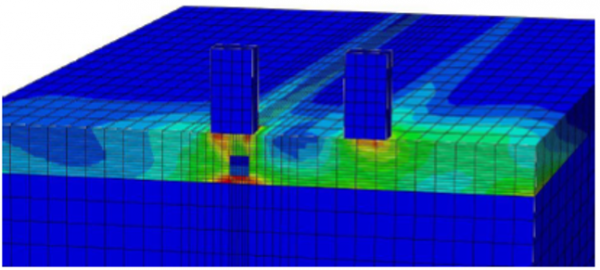 |
Mechanistic-Based Evaluation of Performance Thresholds for Engineered Surface Asphalt MixturesVirginia Department of Transportation, 2022-2024 Abstract: In 2018, an initial effort was undertaken by Virginia Transportation Research Council (VTRC) to provide benchmark indications of performance for a number of “typical / everyday” asphalt surface mixtures produced and sampled in 2015 in anticipation of this new approach. Three fast, simple, practical, but empirical performance tests addressing different modes of distresses were selected for use as part of the BMD method. The selected tests were Cantabro test, the Indirect Tensile cracking test (IDT-CT), and the Asphalt Pavement Analyzer (APA) rut test for assessing durability, cracking and rutting potentials of asphalt mixtures, respectively. This study will build on this initial efforts to: establish links between laboratory performance-related asphalt mixtures empirical and fundamental properties (on one hand) and M-E structural pavement design (on the other hand). This is a vital step to a practical integration of mixture design and structural design; verify (or refine) the performance thresholds on the basis of mechanistic approach, rather than empirical approach; and establish and verify initial traffic-based performance thresholds for the empirical tests tied /correlated to the fundamental tests and mechanistic analyses. |
 |
Asphalt Pavement Reflective Cracking Model to Better Address RehabilitationFederal Highway Administration, 2021-2023 Abstract: The Federal Highway Administration (FHWA) has developed mechanistically based performance comparison models to evaluate the cracking and rutting performance of asphalt pavement mixtures. These models form the basis of an asphalt performance comparison development effort and are being implemented into a FlexPAVE software program for analyzing pavements and predicting distress. In this research study, NCSU will assess current asphalt pavement cracking models that can be applied to reflective cracking. We will further research, develop, calibrate, train, and validate a mechanistically based asphalt pavement reflective cracking model that is consistent with existing FlexPAVE methodology and performance tests; incorporate it into the FlexPAVE software and the FlexMAT and FlexMIX data analysis tools, and assess and incorporate run time improvements to the model, software, and analysis tools. |
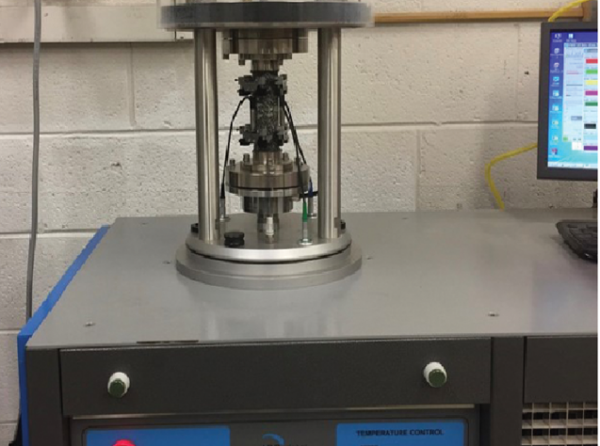 |
Seasonal Effects due to Moisture Variation and Investigation of Cyclic Fatigue Temperature and End Failure on Pavement PerformanceFederal Highway Administration (through Advanced Research Associates), 2020-2022 Abstract: This research will involve experiments and analysis to improve the AASHTO TP 133 protocol by incorporating more scientifically based temperature selection guide and providing guidance on the maximum air void content for specimens that are subjected to this standard test method. In addition, the FlexPAVETM software will be updated to incorporate seasonal effects into the base layer and the user guides for improved usability. This research supports ongoing FHWA efforts as part of a performance-related specification framework which seeks to increase pavement life through fundamental testing and predictive relationships. Recent developments in these performance tests, adoption of standards, FlexMATTM, FlexMIXTM, and FlexPAVETM provide highway agencies and asphalt paving community with a unique opportunity to use performance tests and mechanistic models for asphalt PEMD, asphalt pavement design, and performance related specifications to integrate these different phases in pavement construction using the same test methods and mechanistic principles. These tools help link material characteristics from testing with mechanistic models to predict performance; and ultimately identify how to best design, construct, and accept a pavement. |
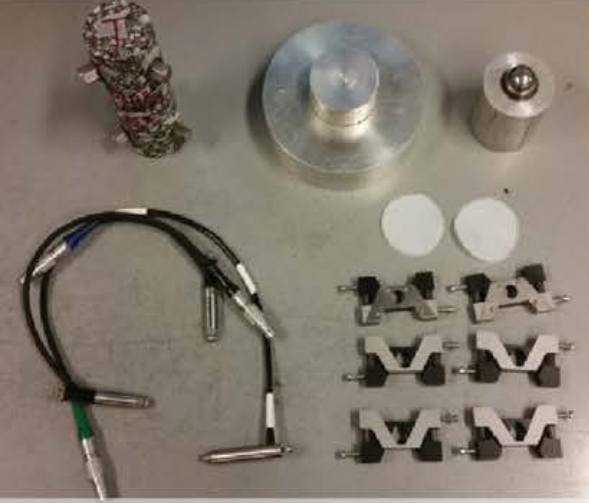 |
Ruggedness and Interlaboratory Studies for Asphalt Mixture Performance Tester (AMPT) Small Scale Dynamic ModulusFederal Highway Administration (through Advanced Research Associates), 2020-2022 Abstract: In this research study, NCSU will design, conduct, and provide recommendations relating to a two-phase ruggedness and interlaboratory study on a test method that has been identified as critical to asphalt pavement performance and design practice. AASHTO TP 132 (2019) Standard Method of Test for Determining the Dynamic Modulus for Asphalt Mixtures Using Small Specimens in the Asphalt Mixture Performance Tester (AMPT) has been developed, refined, and recently published as an AASHTO provisional standard; a statistically sound refinement procedure is needed to facilitate widespread adoption and implementation. Not only can this standard be used to obtain inputs to the AASHTO PavementME pavement structural analysis software, the standard is being used in ongoing FHWA efforts as part of a performance-related specification framework which seeks to increase pavement life through fundamental testing and predictive relationships. AASHTO TP 132 is of interest because of its fundamental nature, determination via the AMPT standardized equipment, and its ability to model and predict material performance over a wide range of loading and climate conditions a pavement may experience; resulting in better performing, safe, quiet, durable, long lasting asphalt roadways. Additionally, a draft practice for preparing small-scale specimens has been developed and published as AASHTO PP 99 (2019) Standard Method of Practice for Preparation of Small Cylindrical Performance Test Specimens Using the Superpave Gyratory Compactor (SGC) and Field Cores. This draft practice is of significant interest to the asphalt materials community due to anticipated materials, time, and cost savings associated with preparing and evaluating smaller performance test. |
 |
Improving Resilience of Transportation Infrastructure to Hurricane DamageNorth Carolina Department of Transportation, 2021-2023 Abstract: Infrastructure resilience has become an important topic for North Carolina. Recent hurricanes and other extreme events have caused more than $450 million in damage to the States’s transportation infrastructure. In addition to the cost of the infrastructure, the NCDOT spent considerable resources to redesign and repair many elements after each event. Though many agencies have studied the topic of infrastructure resilience to extreme events, the literature suggests that the generalizability of their findings is limited because of the contextual sensitivity of the available strategies. In this case, data on the effectiveness of design and repair strategies within the context of North Carolina is required. Thus, research is needed to identify and evaluate the specific elements of the new infrastructure that positively contributed to the improved performance during Hurricane Florence and those that did not positively contribute. This research will address these issues by; 1) evaluating the design process for roadway infrastructure that was repaired following Hurricanes Matthew and Florence, 2) identifying the specific elements of the new infrastructure that positively contributed to improved performance during Hurricane Florence, and 3) developing recommendations on design elements that improve the resilience of NCDOT roadways. |
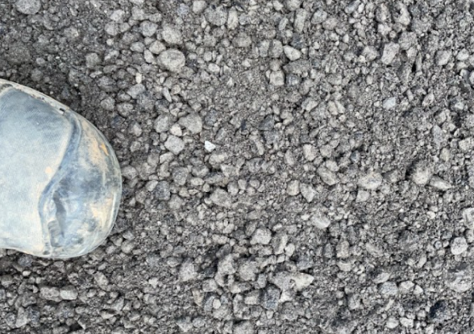 |
Evaluating Recycling Agents’ Acceptance for Virginia: Test Protocols & Performance-Based Threshold CriteriaVirginia Department of Transportation, 2020-2022 Abstract: In 2007, the Virginia Department of Transportation (VDOT) introduced specifications to allow higher percentages of reclaimed asphalt pavement (RAP) (i.e., up to 30%) in hot-mix asphalt (HMA) surface mixtures without adjustment of the virgin binder grade. By 2013, VDOT had begun to consider the feasibility of allowing the use of surface mixtures containing up to 45% of RAP material. While these results have been generally positive it has been found that some challenges exist and that these can be addressed through the use of softer binders or additives such as recycling agents (RAs). Currently, there are no unique and / or detailed guides or specifications that outline a framework to evaluate acceptability of RAs in the state of Virginia. Therefore, this study aims to identify and / or develop a testing protocol to evaluate the effectiveness of RAs in alleviating the brittleness of high RAP asphalt mixtures. In addition, a performance-based parameter(s) with its threshold limits / criteria will be identified or developed to accept or reject a certain product (i.e., recycling agents). Both objectives will facilitate responsible use of innovative materials as part of Virginia’s Balanced Mix Design (BMD) initiative. |
 |
Development of Friction Performance ModelsNorth Carolina Department of Transportation, 2021-2023 Abstract: Vehicle collisions and increases in collisions rates during wet conditions are one of the major safety concerns for the NCDOT. Collision rates increase when the surface is wet because skid resistance reduces under these conditions. The precise amount of loss is dependent on many factors, but the consensus among experts is that pavement friction and macrotexture are important factors that affect the skid resistance and changes in this resistance under wet conditions. Although the NCDOT actively addresses skid resistance issues as they are identified, recent studies have shown that friction and, more notably macrotexture, are negatively affected when the pavements are newly overlaid. This project will address this topic and issue by; 1) characterize friction and texture performance models, 2) develop friction and texture performance thresholds, and 3) identify asphalt mixture compositional factors (gradation, asphalt content, presence of modified versus non-modified asphalt, etc.) that affect the as-constructed macrotexture and friction. |
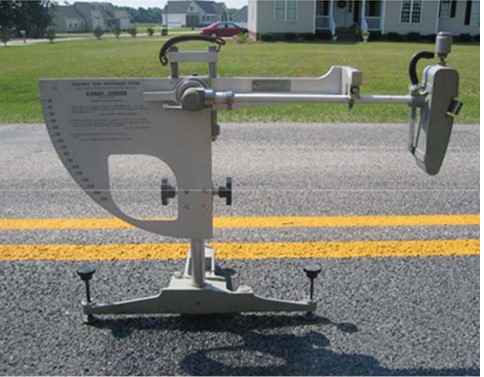 |
Evolution of Pavement Friction and Macrotexture after Asphalt OverlayNorth Carolina Department of Transportation, 2019-2021 Abstract: Vehicle collisions and increases in collisions rates during wet conditions are one of the major safety concerns for the NCDOT. Wet collision rates increase because skid resistance reduces under wet conditions. The precise amount of loss is dependent on many factors, but pavement friction and macrotexture are important factors that affect the skid resistance and changes in this resistance under wet conditions. While current studies have successfully identified the potential for issues in recently overlaid projects, they did not identify whether these effects are temporary, and if so, how long they may last. In addition, past studies have not been able to identify any specific causative effects that may increase or decrease the impact of overlays on skid resistance. Since the primary change after an overlay is placed is the driving surface, there is a need to better understand how the asphalt mixture composition may affect the overall skid resistance of the roadway under wet conditions. The primary outcome of this research will be a dataset of continuous friction and macrotexture measurements for a range of NCDOT roadways. Two other key outcomes are also expected; 1) a method to identify problematic mixture designs prior to placement and 2) a laboratory experiment using QA cores that is capable of screening and identifying problematic mixtures after they have been placed (e.g., due to construction methods). These outcomes can be used by the Traffic Safety and Materials and Test Units of the NCDOT to improve the frictional characteristics and possibly reduce wet collision rates, which will improve roadway safety. |
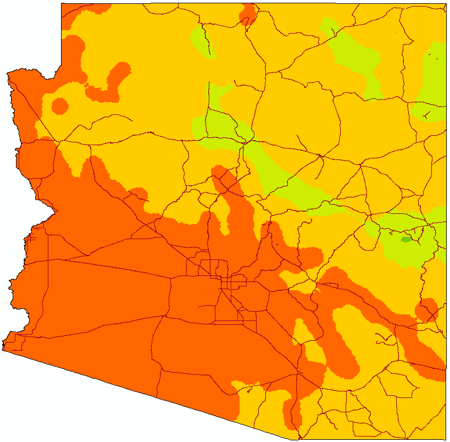 |
Pavement Performance Impacts Predicted by Climate Change Models in Arizona, Phase IArizona Department of Transportation, 2021 Abstract: General circulation models for the global climate (generally referred to as climate change models), have predicted wide ranging changes over the next several decades. Some of these changes relate to roadways and pavement infrastructure. Researchers and government entities have identified temperatures (extreme and mean levels of change) and precipitation as primary drivers for these impacts. In the proposed work, NCSU will work with the Arizona Department of Transportation to develop long-term climate model data in connection with future heat and precipitation to the year 2100 and beyond. The specific emphasis of the proposed work is on impacts to pavements. The objectives of this research will be met by performing four tasks; download data, binder grade assessment, freeze/thaw assessment, and final reporting |
 |
Evaluation of Inverted Pavement for North Carolina RoadwaysNorth Carolina Department of Transportation, 2019-2021 Abstract: North Carolina current allows two basic types of pavement design on NCDOT roadways; 1) those whose structural capacity comes primarily from asphalt concrete (flexible pavements) and 2) those whose structural capacity comes primarily from portland cement concrete (rigid pavements). These designs have been used successfully in many applications throughout the State; however, they utilize a large amount of relatively expensive and difficult to produce materials (asphalt concrete and portland cement concrete). A third technique, inverted pavement design that requires less of these materials and is purported to provide equivalent or superior performance is not currently allowed with the NCDOT specifications. Inverted pavements consist of a 2 – 3.5-inch asphalt concrete surface, supported by a 6 – 10-inch layer of unbound aggregate base and then by 8 – 12 inches of a cement treated subbase. Literature and experience have shown that these pavements can be designed and used in many applications at a substantial cost savings. However, there are many unknowns when directly adopting design specifications from elsewhere as local materials, practices, and experience may not be fully accounted for. Thus, there exists a need to gain state specific experience in the engineering and performance of these structure before their adoption can be considered. The primary outcome of this research will be a set of recommended guidelines for the use of inverted pavement in North Carolina. These outcomes can be used by the Materials and Test Unit of the NCDOT to improve pavement design procedures, which may result in cost savings through improved specifications and greater design flexibility. |

Img. Source: HAPI |
Evaluation of New Asphalt Concrete Job Mix Formula SpecificationsNorth Carolina Department of Transportation, 2019-2021 Abstract: The North Carolina Department of Transportation (NCDOT) has recently modified the asphalt mixture design procedures in part, to increase the asphalt content and address observed cracking issues with asphalt mixtures. These changes have reduced the number of asphalt mixture types, changed compaction levels and the volumetric limits for some mixtures, and adjusted how recycled materials are considered. Given the complexity of the interactions between material parameters, the procedural changes do not guarantee that the resultant asphalt mixture designs have actually achieved the intended goal of improved durability. This study is investigating how these recent changes have affected asphalt mixture designs with respect to composition and performance. A research study is needed because an understanding of how procedural changes like the ones enacted by the NCDOT affect the durability of asphalt mixtures under real world conditions does not exist. This research is also needed because; 1) mixture designs in North Carolina are performed by contractors and submitted to NCDOT for approval, which limits the control that the NCDOT has over how contractors interpret and use the mixture design procedures and 2) currently, the NCDOT does not incorporate cracking tests into their mixture design or mixture verification process; therefore, they must rely heavily on volumetric composition to ensure that durable mixtures are designed and used. |
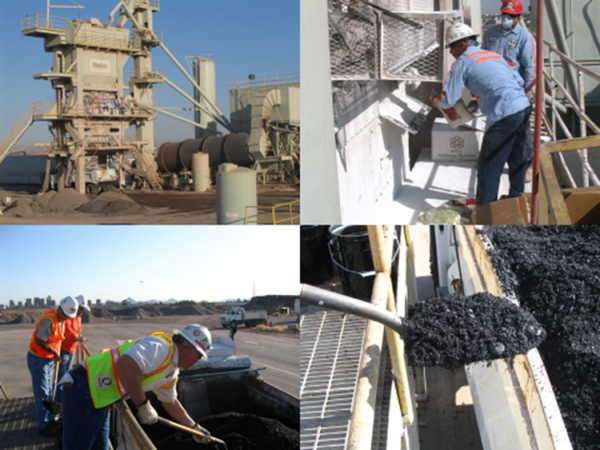 |
Determining Structural Number for FORTA-FIFORTA Corporation, 2019-2020 Abstract: This project will investigate the mechanical properties of FORTA-FI reinforced asphalt concrete mixtures in North Carolina. The state currently has no guidelines on how to consider fiber reinforced asphalt concrete mixture performance in pavement design. This project will therefore perform experiments that compare the mechanical behavior of fiber and non-fiber reinforced asphalt mixtures. Researchers will then perform pavement simulations to examine the impact of these differences on long-term pavement performance. Based on these simulations layer coefficients specifically for fiber reinforced asphalt mixtures will be developed. |
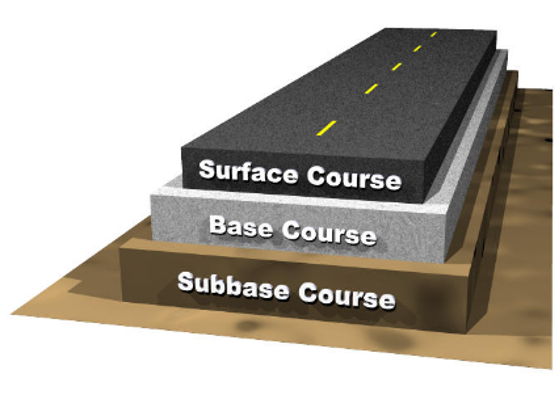 |
Calibration of Structural Layer Coefficients for North Carolina Asphalt PavementsNorth Carolina Department of Transportation, 2018-2020, Abstract: The North Carolina Department of Transportation (NCDOT) uses the AASHTO Guide for Design of Pavement Structures 1993 to determine the minimum pavement stiffness that ensures pavement longevity. While the NCDOT has had success with the structural layer coefficient values it uses, they are largely based on a test road constructed and evaluated in one climate zone and with one set of materials. Modern material selection and design have resulted in substantial changes in AC and aggregate base since this time. These improvements have likely resulted in different structural contributions from these materials, which means the structural layer coefficients should be reviewed and possibly changed. Proper characterization of these layer coefficients could result in substantial cost savings to the NCDOT by reducing the required pavement thickness and/or leading to pavements that require less frequent rehabilitation and reconstruction. With respect to this need, the proposed research plan will achieve two objectives; 1) calibrate the structural layer coefficients for different North Carolina asphalt mixture types using a pavement performance database, NCDOT materials database, and targeted testing; and 2) evaluate the impact of refined structural layer coefficients on pavement design. The primary outcome of the proposed research will be a set of recommended layer coefficients for asphalt, aggregate base, and other layers. In addition, a guideline for calibrating coefficients for new materials will be provided. These outcomes can be used by the Materials and Test Unit of the NCDOT to improve pavement design, which will result in cost savings and improved specifications for flexible pavement design. |
 |
Evaluation MSCR Testing for Adoption in ADOT Asphalt Binder SpecificationsArizona Department of Transportation, 2015-2017, Abstract: The Arizona Department of Transportation (ADOT) asphalt binder purchase specifications are based largely on the AASHTO M320 standard that was developed during the Strategic Highway Research Program (SHRP). During this time modified binder systems (polymeric and chemical) were not as widespread as they are today and the grading parameters developed provided an accurate indication of binder performance. Since the development of this standard, modified systems have become more prevalent and practitioners have identified certain limitations in the M320 parameters. The development of the Multiple Stress Creep and Recovery (MSCR) test (AASHTO T 350) and the release of AASHTO M332are two recent advances that address these shortcomings. The MSCR test measures the non-recovered creep compliance, Jnr, which is characterized at strain levels that exceed the linear viscoelastic limit of the material and produces enough deformation to capture some of the benefits of binder modification. In AASHTO M332, Jnr replaces the ratio of the dynamic shear modulus to the sine of the phase angle (|G*|/sind) as the grading parameter for short term aged asphalt. It also assigns binder grades with two designations, one for temperature (as in AASHTO M320) and the other for traffic (S = standard, H = heavy traffic, V = very heavy traffic; and E = extreme traffic) in Arizona. |
 |
Analysis and Optimization of Trench Geometry for Fiber Optic Cable InstallationsSponsor Withheld, 2017 Abstract: The objective of this study is to optimize the installation process for fiber optic cable installation. |
 |
Studies on Fiber Reinforced Asphalt ConcreteFORTA Corporation, 2014-2017 Abstract: Modification of asphalt concrete mixtures to achieve enhanced engineering performance is common. The most often used methodologies involve either chemical or polymer modification, but a less often recognized form of modification involves mechanical reinforcement. This type of modification carries some advantages over other techniques particularly with respect to compatibility across materials of varying chemical composition and structural configuration. Fiber reinforced asphalt concrete (FRAC) is a technology that provides mechanical reinforcement to asphalt concrete mixtures and enhances the performance of these materials. Within FRAC there are two broad classes of materials; 1) reinforcement to improve the viscosity of the binding materials and prevent drain down in open graded friction courses (OGFC), porous friction courses (PFC), and stone mastic asphalt (SMA) and 2) reinforcement to improve the performance of the asphalt concrete with respect to fatigue cracking, permanent deformation, and/or thermal cracking. Cellulose and mineral fibers are most often used for the first class and synthetic fibers (polypropylene, aramid+polypropylene, etc.) are often used for the second purpose. ASU has conducted a series of projects to investigate and improve upon the performance of asphalt concrete mixtures containing synthetic fibers. In these projects the researchers investigate the material by linking together mixture level performance tests that identify underlying mechanical behaviors of the FRAC with pavement performance and life cycle cost modeling. ASU is also conducting studies to investigate, refine, and develop fiber blends that better address the needs of highway agencies. |
 |
Experiences and Causes of Durability Cracking in ArizonaAZ Pavements and Materials Conference, 2015 Abstract: One of the least studied and hence least understood phenomena in asphalt concrete pavements are durability cracks. These cracks are generally associated with low volume, rural roadways (though not always) and manifest principally as cracks that run transverse to the direction of travel. This pattern of failure suggests a type of thermally induced, but they occur in regions where temperatures rarely drop below freezing. One theory suggests a combination of factors including thermal fatigue brought on by relatively large temperature variations, oxidation induced stiffening and embrittlement of the binder, and possibly other support condition related mechanisms all combine to yield this distress. Other mechanisms related to the aggregate skeleton resistance to thermal contraction may also have an important role in the extent and severity of this distress. In spite of not having a coherent or consistent explanation of the cause, many agencies are now faced with management and maintenance of roadways that exhibit these durability cracks. It is believed that a comprehensive, quantified explanation of this distress will lead to 1) better decisions at the planning/design phase so as to avoid the development of this distress and 2) management solution that yields the most appropriate set of strategies to best mitigate the impacts of durability cracking. The first step in this process is compilation of area experiences, documentation of examples, and a system by which these cracks can be documented. At the request of the Arizona Pavement/Materials Conference Committee, funds are being requested to study and compile local experiences with durability cracks and to create a mechanism to allow agencies to share technical details on projects that show this distress. The technical brief produced from this study will highlight the most likely causes of the distress (from existing knowledge coupled to what is learned through the interview and documentation process). It will also discuss any relevant findings from the interview process and propose a common set of ranking and terms that can be used to document the distress and share resources and information across local agencies. |
 |
Economic Impacts from Challenges in Pavement Engineering in an Uncertain Climate FutureUS Department of Transportation, 2015-2016 Abstract: Climate change and extreme weather events have become issues of greater relevance to transportation engineering professionals. However, there remains relatively weak science for how climate change hazards can impact transportation infrastructure, the personal and commercial use of the infrastructure, the economic disparities that may occur from inconsistent geospatial and temporal influences, and how these impacts should be best managed. Recently the National Cooperative Highway Research Program evaluated how climate change might introduce hazards to transportation infrastructure. The outcomes provided, in very general terms, scenarios for the potential impact of these changes (Gaspard et al. 2007). While useful for planning, operations, and disaster management uses, these findings do not provide tangible information for designers on the engineering controls that may emerge in response to greater climatological uncertainty nor the economic impacts associated with the uncertainty. For example, in one scenario designs may adjust to a higher overall level of reliability, which will increase infrastructure costs and maintain current levels of performance. In an alternative vision the engineering could remain the same and performance could reduce by either overall system deterioration and/or increased frequency of catastrophic failures. Currently the knowledge to accurately assess the economic impact of these (or other) scenarios inclusive of user/freight delay does not exist. In the proposed study, the research team will use climatological forecasts to develop an economic assessment of pavement performance over time in order to identify how engineers can improve the reliability and reduce the life cycle costs of roadways in an uncertain climate-impacted future. The scope of this study will be with respect to high truck volume interstate pavements. |
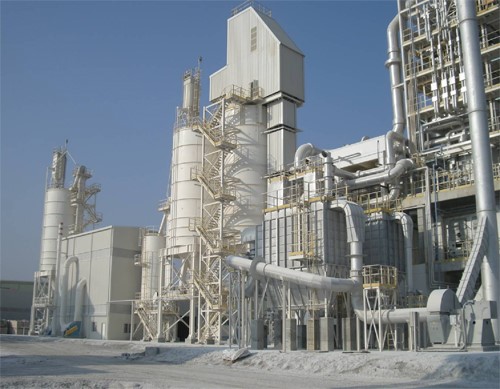 |
Investigation of Aging in Hydrated Lime and Portland Cement Modified Asphalt Concrete at Multiple Length ScalesAZ Pavements and Materials Conference, 2015 Abstract: The process of oxidation can cause stiffening and embrittlement of asphalt concrete, which may result in increased cracking and ultimately reduced pavement life. This phenomenon has been studied extensively with respect to asphalt binder where researchers have proposed conceptual, chemical, and rheological models to describe the oxidation process. While these efforts have made considerable headway towards explaining the fundamental process of oxidation at the asphalt binder scale, an equivalent understanding of the effects of these binder changes on the mechanical behaviors of asphalt concrete has not been achieved. The reasons for this lack of a fundamental link may be due to; 1) the aging kinetics are highly binder specific and dependent upon temperature; 2) physico-chemical interactions between asphalt binder and aggregate may be significant but are not very well understood, 3) particle contact and interaction are mixture dependent and not well understood; 4) thermal exposure during the mixing and placement operations can be highly variable and in some cases not very well controlled; and 5) void content can vary. Coincidentally, there has been substantially less research to understand the aging phenomenon of asphalt mixtures. Some of these works conclude that without a fundamental link the only way to determine the impact of aging on mixture properties is direct experimentation of the mixtures The properties of asphalt concrete are the result of many interdependent physical and chemical mechanisms occurring across multiple length scales. Admixtures such as hydrated lime (HL) and portland cement (PC) are known to affect the behaviors of asphalt concrete at the macroscale, but their contribution at other scales and influences on overall performance of the material are not well understood. This study investigates the potential for HL and PC for mitigating the effects of asphalt concrete aging with respect to modulus and fatigue resistance. The properties of interest are being evaluated at multiple scales which involve binder, mastic, and mixture testing. Rheological analyses of aged and un-aged control, HL modified, and PC modified mastics indicate that HL possesses greater potential to mitigate aging than PC. In mixture testing, the modulus results showed trends similar to that of mastics wherein the HL modified samples were the stiffest and also showed greater potential to mitigate aging. As expected, the relative increase in stiffness and relative potential to mitigate aging, averaged across temperatures, was found to be higher in mastics than the mixtures. The results from uniaxial fatigue test show that HL mixtures possess higher fatigue resistance when aged, thus less negative impacts from the oxidation process. Magnification of aging mitigation potential at the mastic scale and its direct correlation to fatigue behavior, explains why multiple scale evaluations can be useful in evaluating the true benefits of the admixtures. |
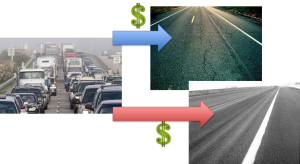 |
Impact of Freight Movement Trends on Highway Pavement InfrastructureUS Department of Transportation, 2014-2015 Abstract: The major challenge for any pavement is the freight transport carried by the structure. This challenge is expected to increase in the coming years as freight movements are projected to grow and because these movements account for most of the load related distresses for the pavement. The problem is not simple in that the prediction of future freight traffic movements depends on current traffic conditions and an accurate prediction of economic and population growth of the different regions of the United States. The prediction of pavement deterioration also involves along with the future freight traffic, an assessment of the existing pavement and soil conditions and also the part played by the environment. In this project the issue of freight on the pavement infrastructure is explored by combining freight movement predictions with pavement performance prediction models. This work uses current traffic, climate, soil, and the pavement construction details of major interstate routes in the United States to assess the impacts from freight projections. Under the scenarios examined, it is found that interstates in the Mountain and South-Atlantic regions of the United States are particularly prone to trends in freight movement. Conversely, pavements along the Pacific coast and West-Central regions are expected to sustain projected freight movements better |
 |
Evaluation of ADOT MSCR DatabaseAZ Pavements and Materials Conference, 2015 Abstract: The objective of this study is to evaluate the Arizona Department of Transportation (ADOT) Multiple Stress Creep Recovery (MSCR) test database. This study examines the impacts of a change to MSCR based asphalt grading for the state of Arizona and seeks to provide ADOT and local suppliers with the necessary information to participate in regional MSCR/ AASHTO M332 task groups. The information obtained through this study will benefit ADOT, asphalt binder suppliers, and the Arizona State University (ASU) civil engineering students and faculty. The MSCR test specified in AASHTO T350 forms the basis for a revised and alternative performance grading specification that is described in AASHTO M332. The test is thought to better classify modified asphalt systems. A recent Asphalt Institute survey indicates that 26 states have implemented, will implement, or are considering implementing the protocol at least partially. Although Arizona is not among these 26 states, MSCR testing has been performed periodically since 2008 and currently ADOT has a database of more than 340 asphalt binder samples from across the state. This study is not intended to evaluate the MSCR test itself, but rather the expected impacts of the MSCR based grading system (AASHTO M332) if applied to the currently available asphalt cements in Arizona. |
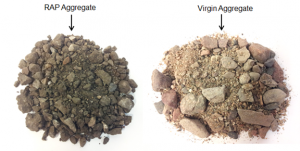 |
Use of Micro-Mechanical Models to Study the Mastic Level Structure of Asphalt Concretes Containing Reclaimed Asphalt PavementArizona State University Startup, 2012-2014 Abstract: Over 90% of U.S highways and roads are surfaced with hot mix asphalt (HMA). As the country’s infrastructure ages, these roads and highways have to be maintained and rehabilitated. Reclaimed asphalt pavement (RAP) is the term given to asphalt pavement materials that have been removed from an existing pavement structure during re-construction, re-surfacing and/or other utility/maintenance works and processed so that they can be incorporated into new asphalt concrete or be used as a granular base, subbase, embankment material, or fill material. When properly crushed and screened the final product consists of high quality well graded asphalt coated aggregates. Depleting supply of raw materials, coupled with increased demand and limited supply and emphasis on sustainable infrastructure has necessitated use of RAP more now than ever before. Traditionally, the use of RAP in pavements has been restricted to a maximum of 15%. The main concern among the contractors and the states with using higher dosage rates is the increase in stiffness of the mix that comes with the addition of RAP. This increase in stiffness makes the pavement rut resistant but also makes it more brittle and prone to cracking. Past research has emphasized the importance and influence of physicochemical interaction on the behavior of regular asphalt concrete mixtures. These influences are likely present in RAP mixtures as well albeit in a more complicated way. Recent research has supported this hypothesis and suggests that the difference in performance of non-modified and RAP modified asphalt concrete mixtures to the possible difference in physicochemical interactions due to presence of RAP. The hypothesis behind this study is that a better understanding of physicochemical interactions of RAP modified mixtures will provide more insight into the performance of these mixtures. The present research seeks to study these physicochemical interactions at the mastic scale due to relatively simpler interactions present in mastics when compared to the mixtures. A locally sourced RAP material was screened and sieved to separate the coated fines (passing #200) from the remaining sizes. These binder coated fines were mixed with virgin filler at proportions commensurate with 0%, 10%, 30%, 50% and 100% RAP dosage levels. Mastics were prepared with these blended fillers and a PG 64-22 binder at a filler content of 27% by volume. Rheological experiments were conducted on the resulting composites as well as the constituents, virgin binder, solvent extracted RAP binder. The results from the dynamic modulus experiments showed an expected increase in stiffness with increase in dosage levels. These results were used to model the hypothesized structure of the composite. The study presented discusses the different micromechanical models employed, their applicability and suitability to correctly predict the blended mastic composite. |
Projects as Co-Principal Investigator
 |
Technical Assistance Program: Synthesis of Research on the Impact of Tire Tread and Pavement Macrotexture on Dynamic Hydroplaning on Wide PavementsNorth Carolina Department of Transportation, 2024 Abstract: The goal of this research was to synthesize the available research on the effects of tire tread and pavement macrotexture on dynamic hydroplaning. Hydroplaning on wide pavements is a complex phenomenon involving several relevant factors including roadway geometrics, hydraulics, vehicle response, tire characteristics and driver behavior. It is understood that tire tread depths and modern tread patterns along with pavement macrotexture play an integral role in the hydroplaning risk. Understanding the results and relevance of available research and practice will help to understand the impacts these variables have on the resulting hydroplaning speed. |
 |
ARC Research Hub for Smart Next Generation Transport PavementsAustralia Research Collaboration, Monash University (Prime) Abstract: The ARC Research Hub for Smart Next Generation Transport Pavements, dubbed Smart Pavements Australia Research Collaboration, or ‘SPARC’, aims to advance and transform the Australian pavement manufacturing industry. It will do this by addressing short, medium and longer-term transport challenges through high-quality, collaborative research in innovative materials, smart technologies and advanced design, construction and maintenance methods, making Australia’s transport pavements smarter and more sustainable. Australia spends approximately $20 billion annually on roads, with up to $7 billion a year spent on maintaining its 900,000 km road network, the highest per capita maintenance expenditure in the world. Roads are Australia’s largest publicly-owned infrastructure, with a replacement value between $200 and $300 billion. IThis structure, together with more extreme weather events, has generated a substantial maintenance deficit and this deficit will continue to worsen as growing population increases demand for safe transport infrastructure networks. For the first time in history, the SPARC Hub creates a national innovation platform linking the full value-chain of universities, road research organizations, contractors and road authorities to future-proof the pavements industry, making transport pavements (road, airport, and min-haul pavements) cost-effective, longer-lasting, safer, with a lower environmental footprint and ability to adapt to future transport demands, saving billions of dollars in short, medium and longer term. The NCSU role in this center will be to 1) provide advice and guidance to the Hub-Director, 2) participate in Scientific Advisory Board meetings on Hub Director’s invitation, and 3) advise the chief investigators of projects agreed between the Hub Director and the Partner Investigator of the Other Organisation. |
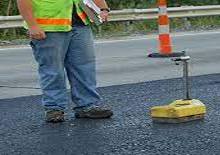 |
Quality Assurance (QA) Aspects of Performance Related Specifications (PRS)Transportation Research Board, National Center for Asphalt Technology (Prime) Abstract: Transportation agencies and industry are continually looking for ways to innovate to improve performance. The quality of highway construction translates directly to performance. The better the quality, the better the performance and greater the life of the infrastructure product. Performance related specifications (PRS) provide a mechanism for agencies to incentivize good quality and recover loss of service life by dis-incentivizing marginal quality in a rational and defensible manner, while also allowing flexibility and innovation. PRS provide a bridge between design, construction quality, and long-term performance and thus, a direct linkage between design expectations and construction quality. In this project the research team will develop a statistically sound quality assurance (QA) approach around the PRS framework. This work will integrate other ongoing work at NCSU, the NCAT, and Heritage Research Group to develop guideline documents and knowledge on the use of QA with PRS. |
 |
Modifying Existing Asphalt Mix Design Procedures for RAP/RAS Surface MixturesNorth Carolina Department of Transportation, PI: Cassie Castorena (NCSU) Abstract: The use of high Recycled Binder Replacement Percentages (RBRs%) in asphalt surface mixtures is increasing. The asphalt binders in Reclaimed Asphalt Pavement (RAP) and Recycled Asphalt Shingles (RAS) are generally hardened and embrittled from oxidization and may not fully mobilize and blend with virgin materials. Consequently, high recycled content mixtures may be prone to cracking if appropriate measures to consider this effect are not taken during the mixture design process. In this project, the research team will investigate this issue and work to: (1) modify the NCDOT’s procedures for the design of surface mixtures containing RAP and RAS to improve performance and (2) modify the NCDOT’s specifications to improve the consistency within and across RAP and RAS stockpiles within North Carolina. The research team will be conducting a literature review, conducting AMPT experiments to understand the behaviors of recycled mixtures, and then recommend appropriate revisions to the NCDOT’s current recycled mixture design procedure. |
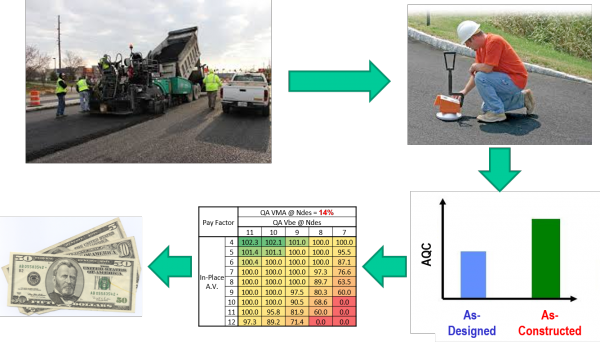 |
Performance Related Specifications Advances Quality Assurance for PavementsFederal Highway Administration, 2018-2020, NCSU PI: Y. Richard Kim Abstract: The Federal Highway Administration (FHWA) has fully supported Quality Assurance (QA) and advancing components of QA for many years. One of those components is Performance-Related Specifications (PRS). As the PRS efforts have advanced additional needs have been identified in order to complete an further advance the research further. This project will serve to further develop, improve, and validate the developed relationships for the PRS. A number of tasks will be completed in order to meet the following specific objectives: development of Level 1 Performance Engineered Mix Design (PEMD) method and threshold values for Level 2 PEMD index parameters; performance testing for transfer functions to support PEMD for PRS; comparison of Balance Mix Design (BMD) and PEMD testing for PRS; coordination with existing PRS research for the development of a comprehensive written marketing plan; and create a system of tools including guidelines and sample specifications for agencies to transition from the traditional QA standard specifications to standard PRS. |
 |
Safety of Earthen Stormwater Infiltration Best Management Practices (BMP) adjacent to HighwaysCalifornia Department of Transportation, 2018-2020, Arizona State University (Prime) Abstract: The research plan developed to scientifically asses the issue of traffic safety for roadsides that incorporate stormwater BMP will involve five individual tasks. The ultimate product of this research plan will be a design and analysis tool that will guide engineers in the deployment of BMP strategies. The plan starts with a literature review of the stormwater BMPs, vehicle dynamics, roadside terrain conditions with and without amended soils, the interactions between vehicles and these roadsides, and the effect of amendments and density changes on the mechanical properties. During this step the research team will also familiarize itself with Caltrans design standards and practices. In the next step, the research will use computer simulations to quantify the current safety of Caltrans roadside soil procedures and compare with the safety of roadsides that incorporate BMP strategies. This comparison will include both material and geometrical factors. To accomplish this step the mechanical and hydraulic properties of soils with and without soil amendments and at different relative densities will be first measured. Then, vehicles traversing typical archetype roadsides will be simulated using Msmac3d software and a soft soil model with properties representing existing Caltrans practice. Finally, the simulations will be repeated, but with soil properties and geometrical characteristics consistent with BMP strategies. The results from these simulations will be articulated around an Excel (or other equivalent form convenient for Caltrans deployment) design and analysis tool. In the final tasks the research team will develop a final report, that will be reviewed and refined with feedback from the Technical Advisory Panel and deliver a final workshop on the project findings. |
 |
Ruggedness and Interlaboratory Studies for Asphalt Mixture Performance Tester (AMPT) Cyclic Fatigue TestFederal Highway Administration, 2017-2020, PI: Cassie Castorena (NCSU) Abstract: AASHTO TP 107 and a related procedure to characterize the fatigue performance of smaller sized asphalt concrete specimens, (collectively referred to as AMPT cyclic fatigue procedures), enable the practical, mechanistic performance characterization of asphalt concrete using cyclic fatigue testing in the Asphalt Mixture Performance Tester (AMPT). AASHTO TP 107 is a key component in the Federal Highway Administration (FHWA) Performance-Related Specifications (PRS) initiative as well as the only fatigue cracking test protocol that has been developed specifically for the AMPT. The objective of the proposed study is to improve AMPT cyclic fatigue test procedures by conducting: (1) ruggedness evaluations in accordance with ASTM E1169 and (2) inter-laboratory studies (ILS) in accordance with ASTM E691. The project will be completed by a collaboration between researchers from North Carolina State University (NCSU) and researchers at the National Center for Asphalt Technology (NCAT). |
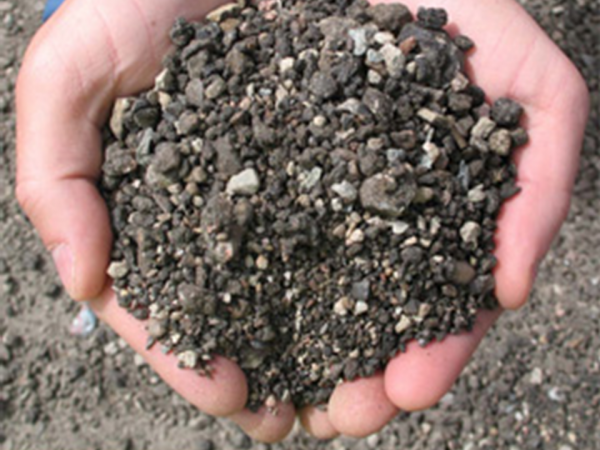 |
Feasibility of using Recycled Asphalt Pavements for City of PhoenixCity of Phoenix, 2017 Abstract: The design and construction of asphalt pavements with Recycled (or Reclaimed) Asphalt Pavement (RAP) have been encouraged nationwide as a sustainable pavement practice and currently more than 100 million tons of the material are used in pavement related activities every year. Typically, recycling projects use between 10 and 40% RAP, and best practices at these contents exist, and many research studies show that performance and environmental benefits of using RAP exist when these practices are followed. Nevertheless failure occur and there are still concerns that higher RAP contents will result higher mixture stiffness and pavements that are more susceptible to cracking; although higher mixture stiffness also provide better performance to protect against rutting development. The factors that lead to failure are often related to local practice and material streams. Concerns are related to the variability of the RAP materials being stored from various projects within the same stockpiles. The use of higher percentage of RAP also complicates the complete understanding of the physio-chemical interactions between the RAP and the virgin binder in the asphalt mixture. In this study ASU researchers are developing an acceptable mixture design framework for the City of Phoenix to implement RAP into their mixtures. (PI Kamil Kaloush) |
 |
Tri-University Transportation Research Center Pilot Research Portfolio: Project 3 ResilienceArizona Board of Regents, 2016-2017 , University of Arizona (Prime) Abstract: In recognition of rising threats from manmade and natural hazards, and of the importance of ensuring resilient operation of the State’s roadways, Project 3 of the ABOR RIF project will integrate the expertise of researchers at Arizona’s public universities (U of A, NAU, and ASU) to develop resilience strategies for transportation infrastructure along the I-10 corridor. The adaptation framework will involve a Sensing, Anticipating, Adapting, and Learning (SAAL)-based approach. Three of these components – Sensing, Anticipating, and Adapting – will serve as the primary focus of our project. Some of the key outcomes of our project include a GIS map for better monitoring of road conditions under a variety of weather conditions/traffic volumes, an assessment of the feasibility of hydrodynamic models for bridge scour prediction, demonstration of a performance-based structural analysis and design procedures that can be adopted to user-selected acceptance criteria, and the development of a decision-analysis framework for evaluating different adaptation strategies. (Co-PI Mikhail Chester, Postdoctoral Research Sam Markholf, abstract written by Dr. Markholf) |
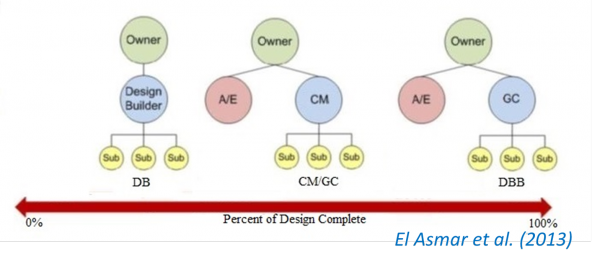 |
Impact of Project Delivery Systems on the Long-Term Performance of Transportation Projects – A National Economic StudyUS Department of Transportation, 2016-2017 , PI: Mounir El Asmar (ASU) Abstract: Transportation is a key element to advancing the economic competitiveness of regions and the nation as a whole. Scarce public resources have to be spent most effectively to deliver the best transportation projects to the public, in order to reduce congestion, enhance the economic value afforded to travelers, and facilitate more efficient movement of goods and services. Project delivery systems govern the way in which these facilities get delivered to the public. They indicate the roles and responsibilities of the different stakeholders involved to design and construct a facility. The objective of this study is to fully investigate the effect of the traditional delivery (e.g., design-bid-build) and alternative project delivery methods (e.g., design-build) on the long-term performance of the National Highway system. Likewise, the impact of procurement strategies used with project delivery, such as the use of contractor incentives and disincentives, will also be studied. Highway projects delivered using alternative project delivery methods and procurement strategies will be compared to those delivered with the traditional Design-Bid-Build (DBB) method, and statistical testing will be completed to quantify the differences in highway performance. The definition of performance may include measures such as roughness, distress (e.g., cracking), skid resistance (safety), and maintenance cost data. (PI Mounir El Asmar). |
 |
Effect of Pavement Condition on Accident RateUS Department of Transportation, 2016-2017 , PI: Mike Mamlouk (ASU) Abstract: Accident statistics developed by the U.S. DOT as well as state and local DOTs show a large number of accidents that have notable implications on the economy. Several factors affect the accident rate such as human factors, vehicular causes, environment, roadway geometry, pavement condition, and their combinations. The main objective of this study is to develop models that relate the accident rates to pavement condition on freeways. Since the project is proposed for a national UTC, data will be collected from 5-6 states in different geographic locations and climatic conditions. Accident types will be separated in order to investigate which accident type is largely affected by pavement condition. The study will be focused on roughness and rutting as the main distress types that could affect accidents. The study will focus on the state highway network in Arizona as an example of the national roadway network since data on accident rates and pavement conditions are readily available. Both flexible and rigid pavements will be used. (PI Michael Mamlouk). |
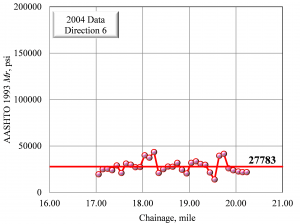 |
Selection of Long Lasting Rehabilitation Treatment using Life Cycle Cost Analysis and Pavement Serviceability RatingOklahoma Department of Transportation, 2012-2014 Abstract: Preserving the current pavement network has become one of the top priorities for many highway agencies. There are many pavements on important routes that have exceeded their design lives and are in need of cost-effective and sustainable rehabilitation. A well-conceived preservation plan will help agencies ensure overall enhancement of the system’s functional ability with a multi-year maintenance and rehabilitation (M&R) treatments program. Such a program will help the agency optimize the allocations of annual investment in pavement rehabilitation at the network (and probably project) level. In this study it will be attempted to offer procedures to assess the current pavement conditions and investigate the historical data for selecting an appropriate rehabilitation treatment so that the use of available funding can be optimized. This study introduces a life-cycle cost analysis (LCCA) to quantify the benefits of selecting long-lasting rehabilitation treatments compared to the long term cost of more conventional treatments. For the purpose of this study, the use of RealCost 2.5 software for conducting LCCA will be followed. This user friendly software is in Microsoft Excel format and available through FHWA. It can be utilized to determine quantitative estimates of construction schedule, work zone user costs, and agency costs for initial construction and rehabilitation activities. Texas A&M University is leading the pavement and LCCA analysis. ASU has been involved in experimental characterization (axial fatigue and indirect tensile creep compliance and strength) of Oklahoma Department of Transportation materials as well as Falling Weight Deflectometer analysis of the study pavements. (PI Maryam Sakhaeifar, TAMU) |
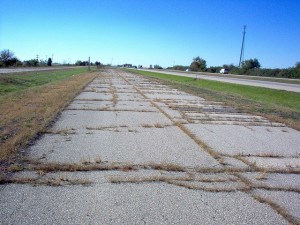 |
Long Term Aging of Asphalt ConcreteNCHRP, 2013-2016 , PI: Y. Richard Kim (NCSU) Abstract: In this project ASU is investigated the accuracy with which laboratory aging must replicate in-service oxidation by quantifying the sensitivity of asphalt concrete properties to changes in asphalt binder rheology. It is well known that the properties of asphalt concrete mixture are affected due to oxidation of asphalt. In the present study, effort is made to evaluate the sensitivity of mechanical properties of asphalt concrete mixture to asphalt binder oxidation through a multiscale evaluation approach. The study involves temperature and frequency sweep experiments on unaged and aged asphalt binder (to establish baseline properties), asphalt mastic (to consider physico-chemical aspects), and fine aggregate matrix (FAM – to consider air voids and aggregate interaction effects). The multiscale approach separates effects of aggregate-binder physico-chemical interactions from those caused by air voids and physical aggregate interactions. Also, all binders were pre-aged to specific aging levels before incorporating to prepare respective aged mastics or FAM samples. The methodology adopted for assessment of sensitivity was based on the theory of crossover modulus and second order rate kinetics of asphalt binder oxidation. (PI Richard Kim) |
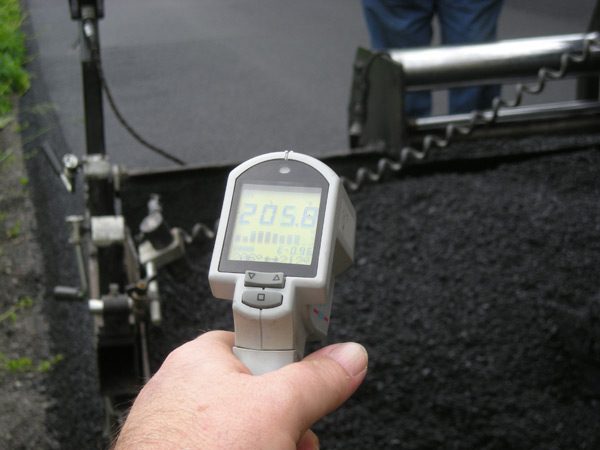 |
MEPDG Inputs for Warm Mix AsphaltsNCDOT, 2011-March 2012, PI: Y. Richard Kim (NCSU) Abstract: The objectives of the proposed research project are: (1) to determine the dynamic moduli, fatigue characteristics, and rutting characteristics of WMA mixtures that are currently used in North Carolina as a function of moisture conditioning and aging levels; (2) to compare the material properties of WMA mixtures with their HMA counterparts; and (3) to develop recommendations for MEPDG input parameters for the various WMA mixtures. These objectives will be accomplished by performing dynamic modulus tests for stiffness characterization, direct tension cyclic tests for fatigue performance characterization, and triaxial repeated load permanent deformation (TRLPD) tests for rutting characterization. These tests will be performed on various WMA and HMA mixtures subjected to varying moisture conditioning and aging levels in order to address these two major sources for the different behaviors between the HMA and WMA mixtures. (PI Richard Kim) |
 |
Performance Related Specifications for Asphaltic Binders Used in Preservation Surface TreatmentsNCHRP 9-50, 2011-March 2012, PI: Y. Richard Kim (NCSU) Abstract: Preservation surface treatments are becoming an increasingly important technique in state highway agencies for maintaining their road networks at an acceptable performance level. The properties of the asphaltic binders used in these surface treatments are very important to the performance of the treatment in which they are used. However, it is often the case that these binders are selected solely based upon local availability and factors which do not necessarily relate directly to the performance of the final product. Proper selection of the asphalt binder source is important and many premature treatment failures can be traced to improper material selection. The purpose of the proposed work is to develop a performance-related specification and grading system for asphalt binders used in preservation surface treatments. This specification should provide a direct relationship between certain key binder characteristics and performance of surface treatments. (PI Richard Kim and Cassie Castorena) |
 |
Evaluation of Plant Produced RAP Mixtures in the NortheastPooled Fund Study for Northeastern States, Subcontract from the University of New Hampshire, 2010-March 2012. PI: Jo Sias (UNH) Abstract: Production of HMA mixtures with higher percentages of RAP is gaining more attention as a way to save money and more efficiently utilize existing resources. Many state agencies and contractors are very comfortable using RAP percentages of 10-15%. However, the use of RAP in amounts greater than 15% comes with questions regarding virgin binder grade changes and increases in cracking potential. Nevertheless, including greater amounts of RAP has great practical, environmental, and economic advantages. This project will add to the body of knowledge and types of RAP mixtures that are currently being evaluated in an FHWA project by the North Central Superpave Center and in other research projects across the country. Ultimately, the industry needs to know how to best utilize RAP materials to maximize performance. The NCSU contribution in this project consists of the development of an accurate fatigue failure criterion for mixtures with varying RAP concentrations. (PI Richard Kim) |
Projects in Other Roles
Co-InvestigatorInvestigation of Primary Causes of Fatigue Cracking in North Carolina, NCDOT, Aug. 16, 2009-Aug. 14, 2011. Abstract: This project will examine issues related to the volumetric design, specifications, quality assurance and lay-down operations that most significantly affect the fatigue cracking potential of asphalt concrete pavements in North Carolina. Specific designs and procedures that produce fatigue prone mixtures will be identified, and recommendations to remedy these conditions will be suggested. Although particular attention will be paid to the processes that produce systematically dry asphalt concrete mixtures, other factors, including structural design, aggregate structure and the interaction of aggregate and asphalt, will also be explored. Hot Mix Asphalt Performance-Related Specifications Based on Viscoelastoplastic Continuum Damage Models, DTFH61-08-H-00005, Federal Highway Administration, Feb. 6, 2008-Feb. 5, 2012. Abstract: Models developed at NCSU over the years provide a unique opportunity to develop a mechanistic Performance-Related Specification (PRS) for hot mix asphalt (HMA) mixtures. This project will focus on development of different analytical and experimental tools that can be used for the development of the HMA-PRS. The HMA-PRS will be hierarchical in nature; that is, a higher level specification uses more complete and accurate test and analysis methods, which requires more sophisticated testing. Multiscale Modeling of Asphalt Concrete for Fatigue Cracking Evaluation, Texas A&M Research Foundation/FHWA, Dec. 26, 2006-Nov. 30, 2011. Abstract: The objective of this research is to investigate asphalt fatigue cracking from a multiscale modeling perspective. To meet this objective requires the use of experiments on asphalt concrete mixture and on materials of different characteristic length (fine aggregate matrix and mastic), as well as the computational lattice model. Since the fundamental characteristics of the material at the different length scales is not known, an exploratory experimental study will need to be conducted from which model forms for linear viscoelasticity and damage can be formulated. These constitutive models will serve as input to the computational model. Investigation of Highway Asset Inventory and Data Collection Methods, NCDOT, April 1, 2008-Dec. 31, 2008. Abstract: An efficient and accurate inventory of an agency’s assets, along with the means to assess their condition and model their performance, is critical to enabling an agency to make informed investment decisions in a Transportation Asset Management (TAM) environment. Today, new technologies provide fast and improved ways to gather, process, and analyze data. The key is to identify the important information elements and assess how much of it is needed to make informed decisions. In this project, new technologies for assessing and inventorying roadside appurtenances, pavements, bridges, and geotechnical features were assessed. Various vendors participated by surveying a pre-selected course and reporting their findings to NCSU. The NCDOT also surveyed this course and similarly reported the findings to NCSU, which compared the two results and developed findings on the use of more automated survey methods in North Carolina. LTPP Computed Parameter: Dynamic Modulus, FHWA, September 1, 2007-April 30, 2009. Abstract: The primary objective of this project is to develop estimates of the dynamic modulus (|E*|) of hot mix asphalt (HMA) layers on LTPP test sections following the models used in the Mechanistic Empirical Pavement Design Guide (MEPDG), for storage in the LTPP Pavement Performance Database. Development of a Multiaxial VEPCD-FEP++ and Its Extension to the Indirect Tension Test, Federal Highway Administration, Sep. 1, 2005-Aug. 31, 2007. Abstract: Over the past decade, the NCSU research team has been successful in developing HMA models that can accurately capture various critical phenomena such as microcrack induced damage, strain rate – temperature interdependence, and viscoplastic flow that is critical for high temperature modeling; the resulting model is termed the viscoelastoplastic continuum damage (VEPCD) model. The primary objectives of this research are: 1) to extend the VEPCD model to multiaxial state of stress; 2) to develop a three-dimensional finite element program with the multiaxial VEPCD model; and 3) to extend the principles used in the VEPCD modeling to the indirect tension mode. Characterization of ALF Mixtures Using the Viscoelastoplastic Continuum Damage Model, FHWA, Aug. 15, 2003-Aug. 14, 2005. Abstract: The primary objectives of the proposed research are: (1) to verify the time-temperature superposition principle in damaged states for various asphalt mixtures used in the current ALF study; (2) to characterize the ALF mixtures using the viscoelastoplastic continuum damage model; and (3) to predict the performance of various ALF pavements using finite element analysis and the VEPCD model. |
|
AffiliatedLocal Calibration of the MEPDG for Flexible Pavement Design, NCDOT, July 1, 2006-June 30, 2008. Abstract: The Mechanistic Empirical Pavement Design guide (MEPDG) developed during NCHRP 1-37A represents a fundamental improvement to asphalt concrete pavement design. This new method utilizes mechanistic principles to compute the pavement responses to load and then empirical performance models to predict performance of the paving material and ultimately the pavement distresses. While this analysis tool represents a significant improvement in design analysis, it also requires substantially input parameters than previous methods. In addition, in its current form it is calibrated to national performance characteristics. In order to maximize the effectiveness of the MEPDG for North Carolina conditions it must be properly calibrated. The objective of this research is to; 1) gather the material characteristics needed for MEPDG analysis with for typical NCDOT materials and 2) to calibrate the empirical distress prediction models to prevailing North Carolina conditions. The primary distresses considered for this process are rutting and fatigue. Top-Down Fatigue Cracking of Hot-Mix Asphalt Layers, NCHRP 1-42A, Subcontract from the University of Florida, May 1, 2006-Dec. 31, 2009. Abstract: In this research, the viscoelastic continuum damage model implemented in the finite element program (VECD-FEP++) will be used to investigate the top-down fatigue cracking mechanism in hot-mix asphalt pavements. The VECD model and the dynamic modulus from the IDT test will serve as the primary experimental tools. The resulting VECD-FEP++ will be used to simulate the behavior of asphalt pavements with varying loading, environmental, and pavement factors. The results from the simulation will be investigated to develop mechanistic procedures to evaluate the top-down cracking propensity of asphalt pavement as a function of various factors and to predict the top-down cracking performance of asphalt pavement. Development of the Asphalt Pavement Performance Prediction Methodology Based on the Viscoelastoplastic Continuum Damage Theory, Korea Highway Corp., Sep. 1, 2004-Dec. 18, 2006. Abstract: The primary objectives of the proposed research are: (1) standardization of test and analysis methods for the determination of viscoelastic properties and performance of asphalt mixtures used in the KHC Test Road project; (2) development of the multiaxial viscoelastoplastic continuum damage (VEPCD) models for six asphalt mixtures used in the KHC Test Road project using the indirect tension (IDT) test and triaxial permanent deformation test; (3) development of the VEPCD finite element program in C++ language (VEPCD-FEP++); (5) calibration of the VECPD-FEP++ usin |
|
Undergraduate Research Assistantships and Graduate FellowshipsViscoelastoplastic Continuum Damage Modeling of Modified and Unmodified Asphalt Mixtures, Dwight David Eisenhower Transportation Fellowship, US Department of Transportation, Sep. 1, 2004-Sep. 1, 2006. Abstract: The objective of this research is to verify the viscoelastoplastic continuum damage model for a wide range of mixtures, including modified mixtures. To verify the results, mixtures whose life is known are compared to the model predictions. Pavements tested under the Accelerated Loading Facility (ALF) at the Federal Highway Administration Turner-Fairbank Highway Research Center in McLean, Virginia are used for this purpose. This fellowship is given to prepare a Master’s student for a career in transportation. The Dwight David Eisenhower Transportation Fellowship Program was created to attract, enhance, and retain the Nation’s brightest minds in the transportation research and engineering professionals. Surface Crack Depth Determination by Non-Destructive Means, National Science Foundation Research Experience for Undergraduates, NSF, and North Carolina State University Research Experience for Undergraduates, NCSU, May 15, 2002-August 15, 2002 and May 15, 2003-August 15, 2003. Abstract: The primary objective of this research is to develop an experimental and analytical method to determine the depth of visible surface cracks in asphalt concrete pavements by non-destructive means. Various methods are evaluated including surface waves with different input magnitudes and ultrasonic wave propagation. A second goal for this research is to determine the location of bottom-up cracks and also how far they extend from the bottom of the pavement. |
